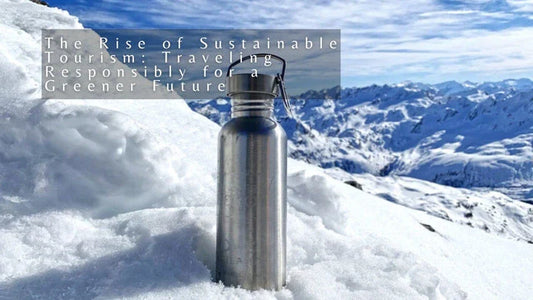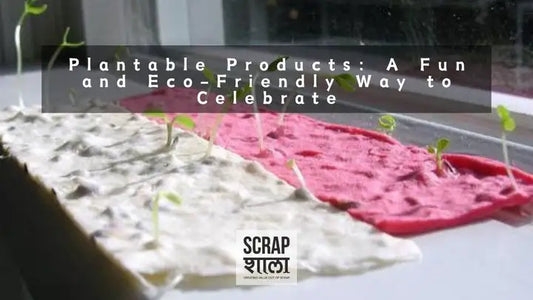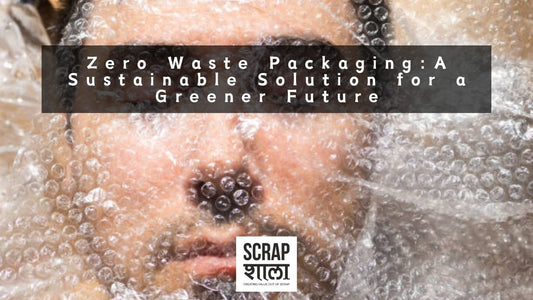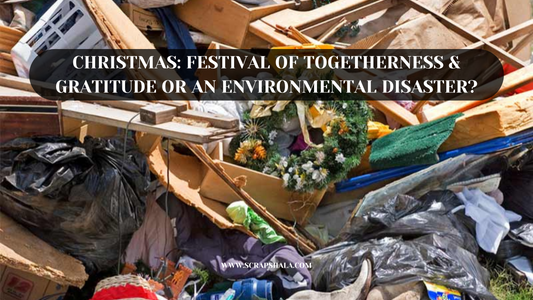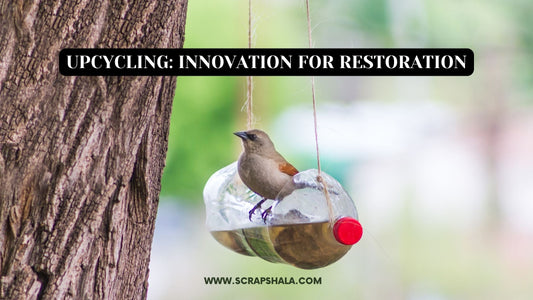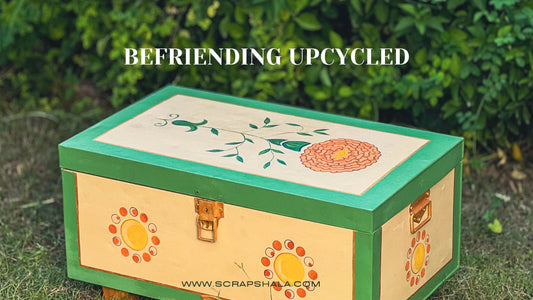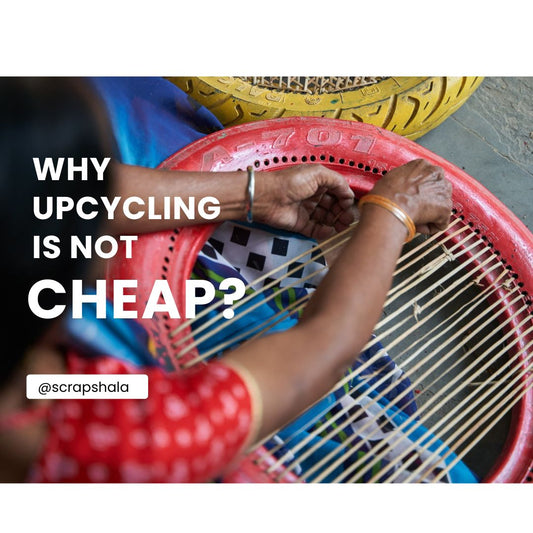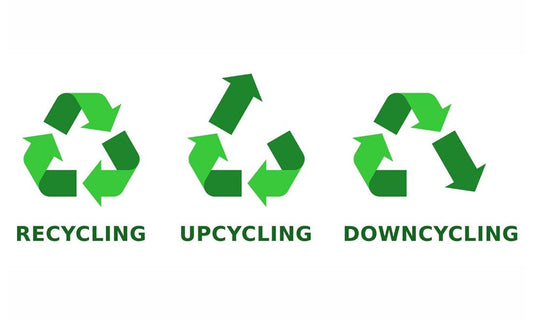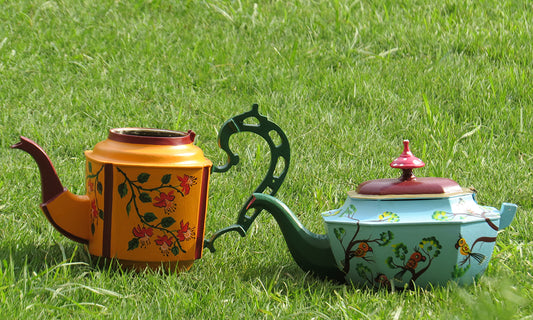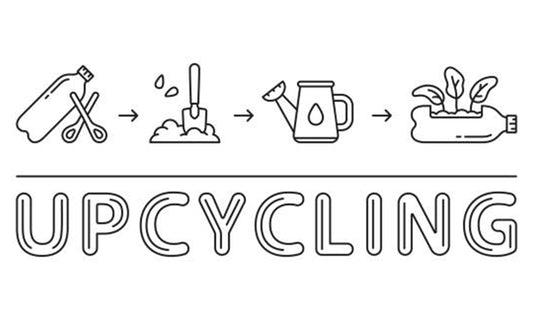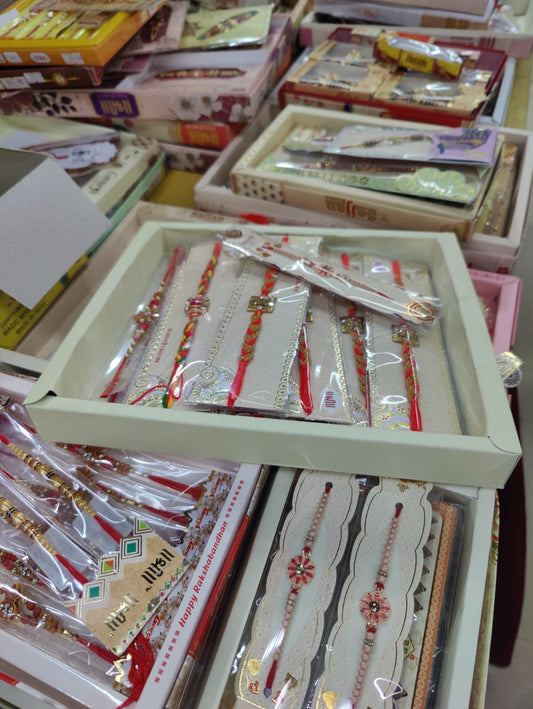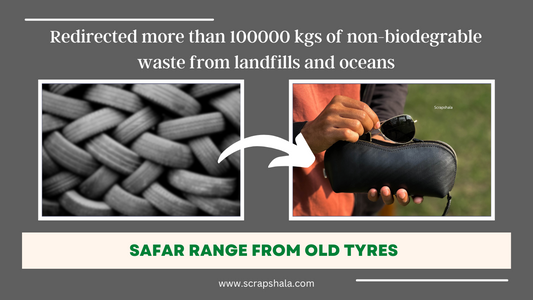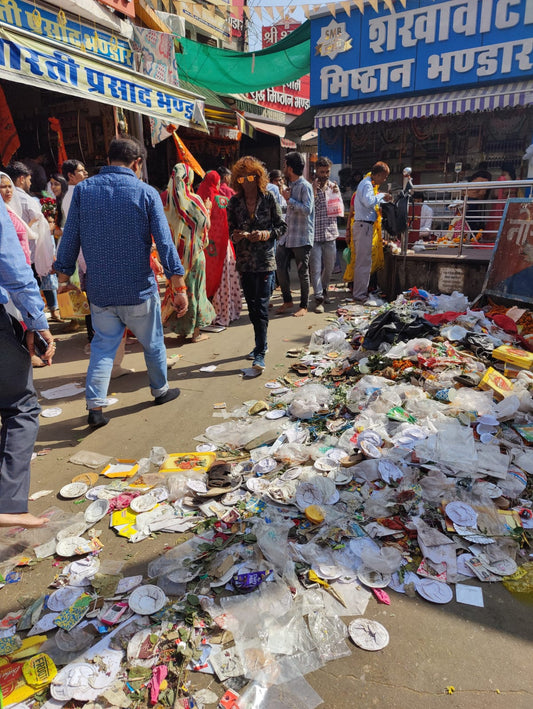As sustainability becomes a global priority, people are increasingly rethinking how they consume and dispose of products. Two concepts you’ve likely come across in this space are upcycling and recycling. While they might sound similar, these two methods differ in both process and purpose.
In this blog, we explore the difference between upcycling and recycling, why both are vital in the fight against waste, and how Scrapshala is using upcycling in India to transform lives and crafts.
What is Upcycling?
Upcycling is the process of taking an unwanted or discarded item and creatively transforming it into something new, useful, and often more valuable than the original. Unlike recycling, it doesn’t involve breaking down materials into raw form—instead, it enhances or repurposes them as-is.
- For example, an old wooden pallet can become a rustic bookshelf, or a worn-out T-shirt can turn into a sturdy reusable bag.
At Scrapshala, this method breathes life into waste materials, turning them into handcrafted, sustainable lifestyle products.
Benefits of Upcycling:
- Reduces landfill waste
- Cuts down on demand for virgin materials
- Saves energy and carbon emissions
- Promotes creativity, DIY culture, and artisan revival
By practicing upcycling, we embrace a creative solution that preserves both resources and cultural craftsmanship.
What is Recycling?
Recycling, on the other hand, involves breaking down a product into its raw materials—like melting plastic or smelting metal—and then using those materials to produce new items.
- For example, recycled plastic bottles can be melted down to create new packaging or even clothing fibers.
Recycling is generally more industrial and requires energy-intensive infrastructure like sorting plants and chemical processing.
Benefits of Recycling:
- Keeps large volumes of waste out of landfills
- Conserves natural resources like wood, water, and minerals
- Reduces pollution and greenhouse gas emissions
- Creates jobs in the waste management sector
While not as creatively flexible as upcycling, recycling remains crucial for managing mass-scale waste.
Upcycling vs. Recycling: Key Differences
Aspect
Upcycling
Recycling
Process
Reusing without breaking down
Breaking down into raw materials
Output
Higher value, unique products
Raw materials for industrial reuse
Energy Use
Minimal
High
Tools Needed
Basic tools or craft skills
Heavy industrial equipment
Sustainability Edge
Prevents waste + revives art & culture
Diverts large-scale waste + conserves materials
Example
Tyres into planters, bottles into lamps
Plastic into fabric, glass into new bottles
In short: Upcycling is creative renewal, while recycling is industrial reprocessing.
Why Both Are Essential for a Greener Planet
While upcycling is more artistic and recycling more industrial, both play important roles in our waste reduction goals.
- Upcycling encourages personal creativity and community empowerment, often supporting local artisans and promoting sustainable design.
- Recycling supports mass waste management and natural resource conservation, essential at a systemic level.
By combining both approaches, we can tackle the problem of waste from two ends—preventing it creatively and processing it responsibly.
The Scrapshala Approach: Upcycling With Purpose
At Scrapshala, upcycling is more than just a production process—it’s a mission to remake the world sustainably.
- We transform discarded materials into handcrafted, eco-friendly products that carry cultural stories and sustainable value.
- Our upcycled creations not only reduce waste but also revive traditional Indian art forms and provide dignified livelihoods to artisans.
From reclaimed wood décor to festival decorations and zero-waste gifts, each product is a testament to the power of transformation.
Conclusion: Make the Conscious Choice
Whether you choose to upcycle a product or recycle it, what matters most is your intention to reduce waste and protect the planet.
- Upcycling: Best for creative reuse, artisan revival, and personal engagement
- Recycling: Best for large-scale material recovery and industrial impact
Both are tools in the sustainability toolkit—and both deserve a place in our daily lives.
At Scrapshala, we proudly choose upcycling to align with India’s rich heritage of craftsmanship, conservation, and community upliftment. You can too.






